Bathtub Peeling: Should I Refurbish or Replace It?
Author: Omar Alonso | Editor: Omar Alonso
Review & Research: Jen Worst & Chris Miller
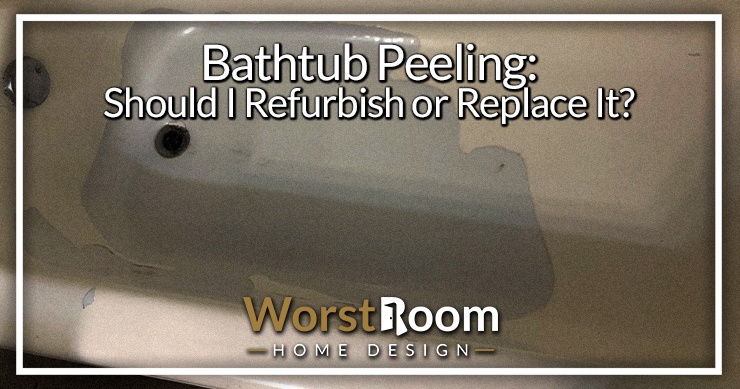
It's annoying when your bathtub liner starts peeling, right? Not only does it look ghastly, but if it's peeling on the bottom, it feels horrible against your feet and skin when you enter the warm water for a soak. So, what are you going to do about your bathtub peeling?
It's time to take action and restore your bathtub to its original condition. We put together this guide to practical strategies to return your bathtub to its former glory.
What Can I Do About My Bathtub Peeling?
Your approach to refurbishing your bathtub depends on whether you rent or own your property.
Options for Tenants in Rentals
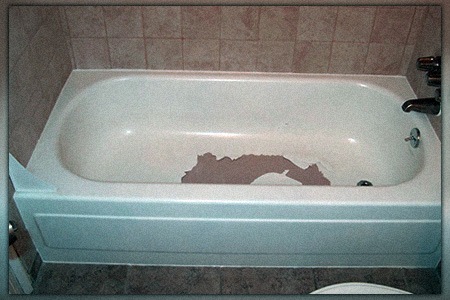
If you're a tenant, chances are your landlord is responsible for fixing the bathtub and restoring the liner or glazing. Check the terms of your lease agreement and see what it says regarding the maintenance of the property.
Most lease agreements hold the landlord responsible for repairing the tub. However, that doesn't mean they'll send a team to handle the repair. Your landlord might not live in the state or even in the country.
So, they might ask you to organize the repair. You'll arrange the work, collect the invoices and receipts, and send it to them via email. They'll either directly refund you or ask you to take the repair costs out of your next rent payment.
In the worst-case scenario, your lease agreement says the landlord isn't responsible for minor repairs, such as changing lightbulbs or repairing the bathtub; you'll have to foot the bill yourself.
The cause of the damage may also change the dynamics of the situation. If you dropped something heavy on or in the bathtub, your landlord might refuse to pay for the repair.
Options for Homeowners
If you own your home, you'll have to repair the damage yourself. Don't expect your homeowner's insurance to pay you for the repair costs. Policies usually state that the insurer isn't responsible for paying for wear-and-tear or damage on items like bathtubs.
You can repair it yourself or hire a contractor to handle the job. A DIY approach to the job is fine if it's a minor repair, but you'll need a professional to repair severe damage or wear and tear. You can get away with painting a plastic bathtub but for nicer tubs you'll want a reglazing.
Peeling varies in bathtubs depending on their age and the materials used in their construction. You have four options available for restoring your tub:
- Buy a DIY reglazing or refinishing kit online or from the hardware store
- Fit a new liner
- Hire a professional repair service
- Replace the tub
If you don't have any handy experience, your best bet is to hire a professional. If you know your way around a toolbox and repair kits, try a DIY job.
Why Is My Bathtub Peeling?
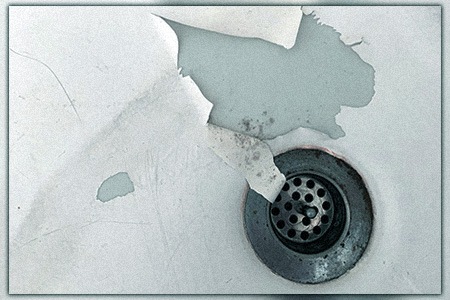
There are three main reasons you’re dealing with a peeling bathtub. It sneaks up over time so don’t feel bad you didn’t notice it. Here’s how that happens right under your nose.
Normal Wear & Tear
Peeling occurs naturally in old bathtubs. Everything in your home has a service life; if it's time, then it's time. Most bathtubs have a 10 to 15-year service life per glazing. If you move into an older property and the bathtub starts peeling, it's just a sign of normal wear and tear.
Bad Refinishing
If you live in an older home, you might have already repaired the bathtub liner, or the tenant or owner of the property might have completed a shoddy repair job before you moved in. Poor-quality repair jobs lead to bubbling and peeling due to temperature changes or poor installations.
Unattended Damage
If you drop a heavy object on the tub's edge or inside it, it will likely chip or crack it, resulting in the liner peeling if you don't repair the damage. You can fix a crack in a plastic bathtub but that will obviously also effect the glaze, so if you don't repair that, too, peeling can begin happening at the edges of the crack. Bathtub chipping nearly always leads to peeling in time.
Is It Worth It to Refinish My Bathtub?
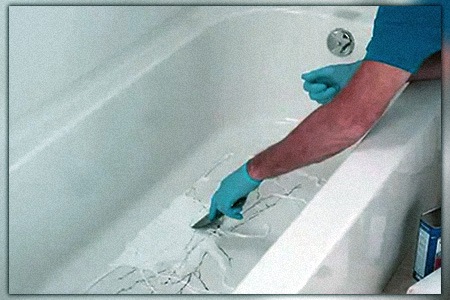
More often than not, it's better to repair and refinish the bathtub than to replace it. Replacing the liner or the entire tub is costly, and you'll probably have to hire someone to complete the task unless you're a serious DIY person.
The time and effort involved in replacing the bathtub mean you'll have a mini-construction site in the area, which might be a hassle. Plus, if you only have one tub in the house or apartment, you can't have a bath until the contractor completes the job, which means using bathtub alternatives which is never fun. I'd recommend arranging showering at a friend's house, at a family member's house, or at the gym.
If you're doing it yourself, it might take a weekend or two, meaning no baths for anything from two to ten days. However, sometimes, you have no choice but to do a replacement. The damage might be too extensive, and refurbishing extensive bathtub peeling with cracks just isn't an option.
Top Considerations for Replacing Your Peeling Bathtub
If your tub is peeling and you decide to replace the tub, you must plan the job before you start. Failing to plan the work usually leads to a longer repair job and wasted time. If you want everything done in one weekend, creating a work plan is the best way to ensure you don't drag the task into the following weekend.
You'll also need to know how to dispose of the old tub. Some cities allow curbside disposal, while others require you to dump it at a designated landfill or recycling plant. Look into how you're going to dispose of the tub. If your city doesn't allow curbside disposal, you'll have to call someone to collect or transport it yourself.
Installing a New Bathtub Cover or Liner
If the damage is manageable, you might get away with refurbishing or replacing the bathtub liner. Instead of going through the hassle of a replacement, you can cover up the cosmetic damage with good results.
You can call a professional service to handle the job or take a DIY approach to the repair. Doing it yourself requires some level of DIY skills and the time to complete the task. If you have no idea how to repair the tub, you'll need to call the professionals to take care of it.
DIY Bathtub Refinishing & Reglazing Kits
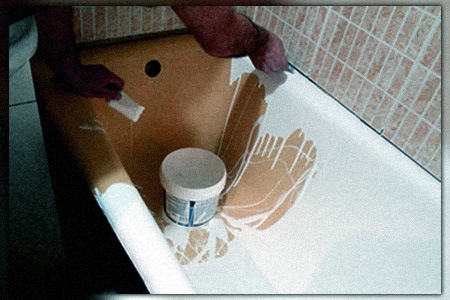
A refurbishing kit is your best option if you're dealing with extensive peeling and cracking in your tub. These kits contain everything you need to restore your tub to its original condition.
If you have experience in home repair projects, the DIY approach might seem like a favorable way to save money on refurbishing your bathtub. You can find DIY bathtub refurbishing kits at online retailers or local hardware stores in your area. However, you'll find a better selection online.
Take care in your DIY job; you'll work with aggressive solvents and sanding dust in the air. Ensure you have a well-ventilated bathroom or wear a respirator when working. Follow the repair kit instructions to ensure you get the best results.
Depending on the tools you have on hand, a DIY repair job can cost anywhere from $130 to $300. You'll need the following to complete the job:
- DIY refurbishing kit
- Respirator, gloves, & eye protection
- Masking tape
- Orbital sander
It’s going to be far less expensive to take care of bathtub peeling yourself, since you won’t be paying for labor. But you need to accept that it may not come out perfect if this is your first time. It’s not a difficult job but there will always be unforeseen surprises doing anything for your first time.
DIY Bathtub Touchup Kits
If your bathtub has minor peeling, you only need a touchup kit to get it looking great. Touchup kits help you repair the damage before it becomes a bigger problem, requiring a more expensive refurbishing kit to rebuild the tub. You can find these kits online or at the hardware store; they cost much less than refurbishing kits. Most retail for between $16 to $25, depending on the brand.
Professional Tub Refinishing Services
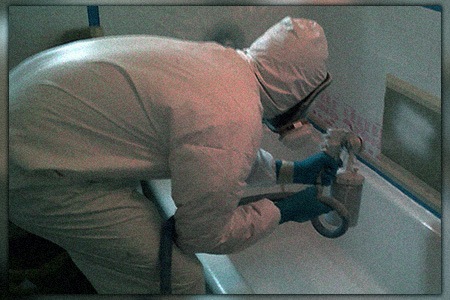
If you don't have any handy skills or tools, you'll need to hire a professional service to repair the bathtub. Obviously, you can expect to pay more for the service, with the average cost being anywhere from $300 for minor repairs and up to $1,000 for a reglaze on a fiberglass tub. Porcelain and cast iron tubs will cost a bit less ultimately, unless you choose to add enamel.
These prices include the labor and materials for the job and the types of bathtubs they'll be dealing with. While it might seem a lot more expensive, most services can complete the job in a single day, and you can get back in the tub in no time, as opposed to waiting days with a DIY repair.
How Many Times Can I Reglaze My Bathtub?
Most handymen agree you can reglaze or refurbish a cheaper bathtub surround once before replacing it. For nicer tubs made of fiberglass, porcelain, or cast iron, you can reglaze it as many times as is needed, though one reglazing should last at minimum 5 years and up to 10 years.
As long as the tub doesn't have extensive damage, you'll find a DIY job is easy enough, provided you have the experience required to complete the task.
If you're refinishing a resurfaced tub, you'll need to take extra care when sanding to get a high-quality finish. The results might not last very long if you are refinishing a previously refurbished tub. Most refurbishment jobs last three to five years before it starts to degrade and peel.
A full reglazing of the tub leaves it as good as new, and you'll get around ten to 15 years of service life before it starts to degrade.
Key Takeaways Regarding Your Peeling Bathtub
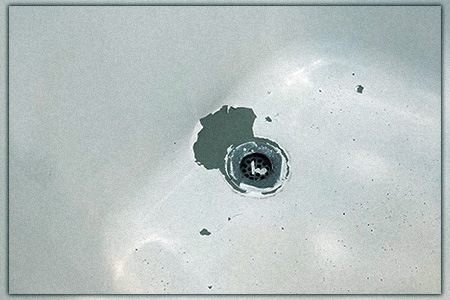
Let’s recap the main points from above to refresh your memory before we send you on your way.
- You can do a DIY or professional refurbishment or repair of your peeling tub.
- A DIY job could cost anywhere from #16 to $300, and a professional will charge anywhere from $300 to $1,000.
- You'll need to plan the job, consider the disposal of the old tub if you're replacing it, and ensure you have the time available to complete the job if you're planning a DIY repair.
- Your repair job will last anywhere from 3-years for a refurbishment or minor repair to ten years for a complete reglazing.
If there’s nothing structurally wrong with your bathtub surround or the frame itself, then reglazing is a great option if you’re not ready for a change yet.
That’s What to Know in a Bathtub Peeling Situation
If you haven’t reglazed or refurbished your chipping bathtub before, you can most certainly do that to prolong the life of this fixture. It’s a bit time consuming but not difficult, and you can hire a professional to do it for you, too, if you aren’t concerned with the expense.
But most pros recommend that if you’re dealing with your tub peeling for a second time you’re better off replacing the entire thing at this point. It means it’s getting on up in age. So if you’re having your bathtub peeling again (as in it’s happened before) start thinking about a full replacement.



